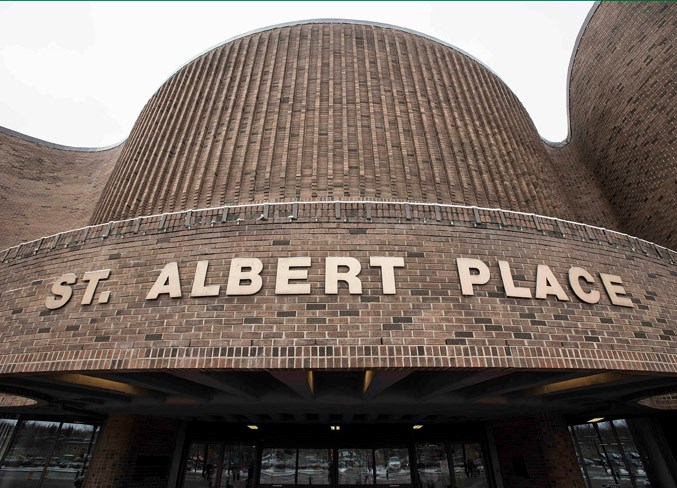While the City of St. Albert has historically prided itself on avoiding long-term debt projects, the City’s director of finance says this strategy has come with its downsides.
Diane McMordie, director of finance for St. Albert, examined council’s existing debt policy and described upcoming challenges with long-term debt during a May 30 council committee presentation. McMordie also touched on potential ways to update St. Albert’s current debt policy, established in 2003, such as reconsidering St. Albert’s own internal debt limits.
“While on the surface, some would argue the city has been fiscally responsible by severely restricting its use of debt, I’m going to challenge this notion a little bit today,” McMordie said.
According to McMordie, debt can act as an affordable source of funding if utilized properly; a strong strategic long-term debt plan will have a mix of old debt retiring, with new debt coming in. Achieving this balance means debt can be can complement “the sustainability of an organization,” she said.
Before 2019, however, St. Albert only had two long-term projects on its books from the past 15-20 years: Servus Place for $38.8 million, and the first leg of Ray Gibbon Drive for $33.4 million.
This historical aversion to debt means that essential growth projects in St. Albert have often been delayed. McMordie gave the example of Fire Hall #1 — scheduled for replacement a decade ago.
Construction for the new Fire Hall #1 began in 2020, and has since been completed. Further, council allocated funding to decommission the old Fire Hall #1 building during their last budget season.
However, had the Fire Hall #1 been replaced when required 10 years ago, McMordie said, the City could have saved costs on maintenance and repairs for the old building, and staggered the expense with Fire Hall #4, which council approved borrowing of $26.5 million for in 2021.
Because of the delay, the City took on both these expenses around the same time.
Currently, St. Albert has several key projects on its horizon, with some examples including a community amenities site in the City’s west with a projected budget of just over $100 million, and the building of Fowler Way at roughly $39 million.
“Due to limited acquisition of debt in the past, the amount of debt that will be retiring does not align with the increased debt requirements to fund projects,” McMordie said.
“Chicken and egg” problem
St. Albert is facing a similar challenge when it comes to facilitating new development and upcoming debt impacts.
Under St. Albert’s off-site levies program, developers pitch in a proportional share for new infrastructure to bring utilities such as water to their land in St. Albert when they develop it. However, because development doesn’t take place all at once, one party often must put up the initial cash to get a project started.
McMordie said these substantial up-front sums required to jump-start development leads to a “chicken and egg situation.”
“Developers need the infrastructure in place in order to develop,” McMordie said. “We need them to develop so we can collect their off-site levies to get the cash to build the infrastructure.”
In previous years, St. Albert was able to utilize excess capacity built into the City’s existing utilities to service new development, allowing the City to temporarily avoid the stalemate of financing new development.
McMordie said St. Albert has reached a stage where that excess capacity has been used up, meaning new infrastructure is essential for development to continue.
These off-site levy projects, combined with municipal growth capital projects (for example, the community amenities site), represent $500 million in new projects from 2023 to 2050. A long-term debt strategy can help guide the City through difficult choices up ahead, McMordie said.
Additionally, McMordie asked whether council would be interested in taking another look at St. Albert’s debt policy, which caps debt at 15 per cent below the limit set for municipalities by the Municipal Government Act (MGA), and caps tax supported debt at 50 per cent of this internal debt limit.
Committee considers change
Coun. Wes Brodhead said that if council is to reconsider its debt policy or take on additional debt, the City will have to make it clear to the public “why this is in our best interest.”
As a councillor serving multiple terms, he noted he participated in conversations where council viewed taking on debt as putting the community at risk.
“We have to understand that the generation came out of 20 per cent interest rates in the early 80s and they are still residents of our community,” Brodhead said. “There’s a real fear around that and I don’t think we can just unilaterally forget it.”
Brodhead noted that members of the public often “equate civic financing to their own situation,” where saving up eliminates the debt costs they themselves have to take on.
“In the city circumstance, current residents are paying for an asset that future residents are going to … receive the benefit thereof,” Brodhead said. “I’m not sure that’s well understood within the community.”
Earlier in the presentation, McMordie outlined that saving up for capital projects can mean that past residents shoulder the entire cost of a project that will primarily benefit future residents.
“One of the best reasons why you would use long term debt … is that you are creating generational equity,” McMordie said.
McMordie said administration will begin to scan other municipalities to see what long term debt strategies are in use across the province, with the aim to provide recommendations to council in the future.




